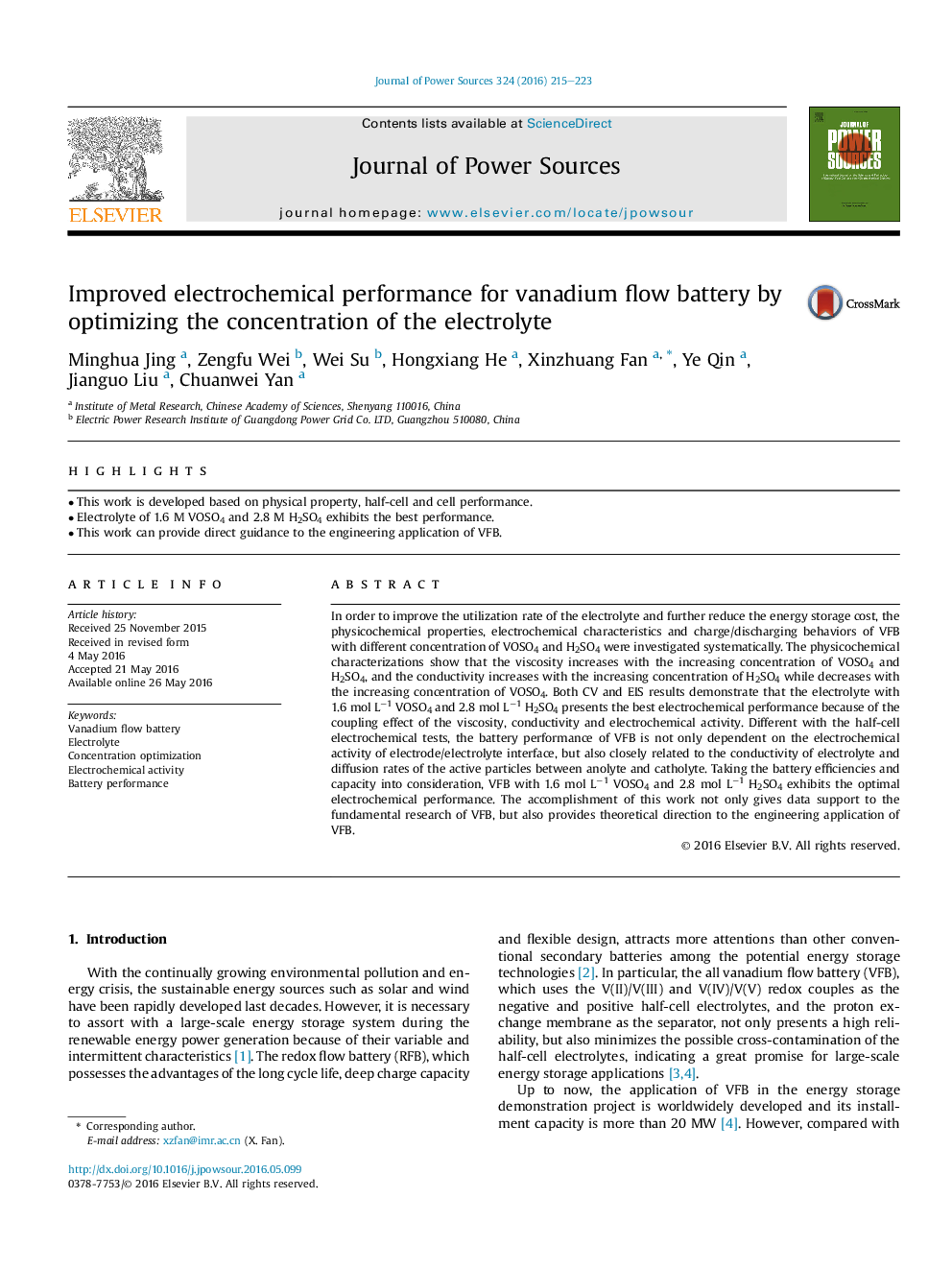| Article ID | Journal | Published Year | Pages | File Type |
|---|---|---|---|---|
| 7727779 | Journal of Power Sources | 2016 | 9 Pages |
Abstract
In order to improve the utilization rate of the electrolyte and further reduce the energy storage cost, the physicochemical properties, electrochemical characteristics and charge/discharging behaviors of VFB with different concentration of VOSO4 and H2SO4 were investigated systematically. The physicochemical characterizations show that the viscosity increases with the increasing concentration of VOSO4 and H2SO4, and the conductivity increases with the increasing concentration of H2SO4 while decreases with the increasing concentration of VOSO4. Both CV and EIS results demonstrate that the electrolyte with 1.6 mol Lâ1 VOSO4 and 2.8 mol Lâ1 H2SO4 presents the best electrochemical performance because of the coupling effect of the viscosity, conductivity and electrochemical activity. Different with the half-cell electrochemical tests, the battery performance of VFB is not only dependent on the electrochemical activity of electrode/electrolyte interface, but also closely related to the conductivity of electrolyte and diffusion rates of the active particles between anolyte and catholyte. Taking the battery efficiencies and capacity into consideration, VFB with 1.6 mol Lâ1 VOSO4 and 2.8 mol Lâ1 H2SO4 exhibits the optimal electrochemical performance. The accomplishment of this work not only gives data support to the fundamental research of VFB, but also provides theoretical direction to the engineering application of VFB.
Related Topics
Physical Sciences and Engineering
Chemistry
Electrochemistry
Authors
Minghua Jing, Zengfu Wei, Wei Su, Hongxiang He, Xinzhuang Fan, Ye Qin, Jianguo Liu, Chuanwei Yan,
